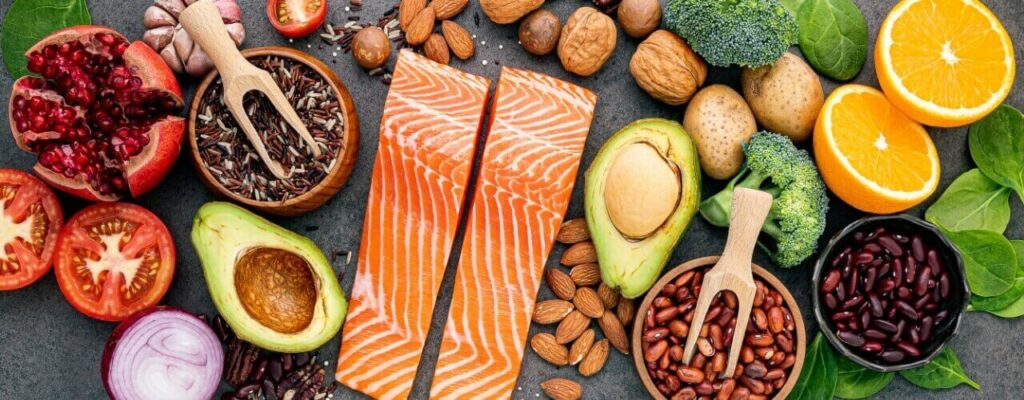Did You Know There Are Foods That Can Help You Find Natural Pain Relief?

If your pain is getting worse, you should reconsider your eating habits.
Some people eat to survive, while others eat to thrive – and still others unknowingly feed their chronic aches and pains.
Eating too much or the wrong foods can trigger inflammatory responses, resulting in muscle, nerve, or joint pain.
Certain foods have been shown to reduce inflammation, while others have been shown to aggravate it. Indeed, “a lot of chronic pain is the result of chronic inflammation,” according to Harvard Health Publishing, “and the evidence is quite strong that your diet can contribute to increased systemic inflammation.”
Although physical and occupational therapists are not nutritionists, they do provide nutritional advice to patients on a regular basis. Dietary changes can make a huge difference in reducing or eliminating pain in some chronic conditions.
Call Choice Therapy today to schedule an appointment to learn more about physical and occupational therapy and how they can supplement a healthy, wholesome diet.
Physical therapy and proper nutrition go hand in hand
The good news is that the right foods can aid in the fight against inflammation just as much as the wrong foods can exacerbate it. Simply changing your diet to a Mediterranean one can put you on the path to better health and less pain.
Fruits, vegetables, fish, whole grains, and healthy oils like olive oil are all delicious options in this diet that have a high nutritional value and a low inflammatory potential.
Even the spices you use can have a big impact on how comfortable you are; for example, turmeric is a powerful natural anti-inflammatory. Your physical therapist can recommend the best dietary changes to help you manage your pain.
Weight management is another important aspect of pain management. Your physical therapy plan may include recommendations on how many calories you should consume, what types of foods you should eat to avoid becoming overweight, and any other changes to your eating schedule or patterns that are required.
Increased physical activity will help you get the most out of your new diet. For example, strength training raises your metabolic rate, allowing your body to burn calories more efficiently.
Other physical and occupational therapy techniques for chronic pain relief will help you become more mobile, allowing you to increase your workouts, lose weight, and reduce stress on your joints and tissues.
How is pain related to what I eat?
How often have you heard the expression, “you are what you eat?”
Certain foods are known to trigger or aggravate inflammatory responses and chronic pain. If you regularly consume the following foods, you may be doing yourself more harm than good:
- Caffeinated foods and beverages
- White bread and other highly processed carbohydrates
- Alcohol
- Foods high in refined sugars and/or trans fats (including cookies, donuts, and margarine)
- Potatoes, tomatoes, eggplant, and other nightshade family members
- Red meat
These foods can be harmful in a number of ways. For example, sugar and aspartame raise insulin levels while also increasing pain sensitivity.
Caffeine and tomatoes both raise blood acidity, which promotes inflammatory pain. However, the end result of all of these foods (and a few others) is the same: an increase in aches and pains. Poor dietary and nutritional choices can increase your waistline as well as increase your pain.
This excess weight can hasten joint degeneration and aggravate arthritis pain. It can also put undue strain on your muscles as they try to support your larger frame. Obesity can promote the development of bulging or herniated discs, which can lead to neurological problems like sciatica.
Common conditions related to your diet
Here are a few examples of conditions where nutritional advice will most likely be part of the patient’s physical therapy regimen:
- Inflammation. Inflammatory foods such as vegetable oils are common in American diets. This can aggravate pain caused by inflammation. A physical therapist may recommend a diet high in antioxidants and anti-inflammatory foods to help manage pain.
- Obesity. Obesity-related pain can become a vicious cycle. You see, the more overweight a person is, the more joint pain they have, which may cause them to be more sedentary. Lack of physical activity causes them to gain weight, which causes more pain.
- Osteoarthritis. Obese people are more likely to develop arthritis, particularly in their knees. When a person is diagnosed with osteoarthritis of the knee, controlling their weight becomes the most important key to controlling their arthritis and pain.
- Autoimmune disorders. Patients with autoimmune diseases (such as Crohn’s disease, multiple sclerosis, type 1 diabetes, and rheumatoid arthritis) now outnumber cancer patients in the United States by a wide margin. Autoimmune disorders are frequently linked to dietary deficiencies in patients.
- Diabetes. Diabetes and pre-diabetes are risk factors for more serious conditions such as heart disease, kidney disease, and blindness. More than 90% of diabetic patients experience neuropathic pain. Diet and nutrition will be critical in treating these diseases.
To make an appointment, contact our clinic right away
There are numerous approaches to incorporating healthy eating habits into your lifestyle. Making this decision, along with regular physical therapy, could change your life in ways you never imagined possible!
Call Choice Therapy in Bagley, Bemidji, Blackduck, Gonvick, Hibbing, or Kelliher, MN today to learn more and schedule your appointment! We’re looking forward to helping you get healthier.
Sources:
- https://health.clevelandclinic.org/anti-inflammatory-diet-can-relieve-pain-age/
- https://www.arthritis.org/living-with-arthritis/arthritis-diet/foods-to-avoid-limit/food-ingredients-and-inflammation-10.php

